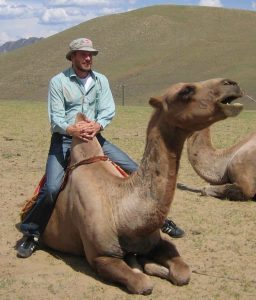Memo #87
By Dalaibuyan Byambajav, Julian Dierkes (julian.dierkes [at] ubc.ca), & Jargalsaikhan Mendee
 The Southern Mongolia Human Rights Information Center, a U.S.-based group, has been reporting on protests in cities along the central-northeastern border between the Inner Mongolia Autonomous Region (IMAR) in China and Mongolia. These reports raise the spectre of ethnic conflict between Han Chinese and Mongolians. In fact, the origins of conflict are less ethnic in nature and more of a clash between traditional pastoral livelihoods and mining operations.
The Southern Mongolia Human Rights Information Center, a U.S.-based group, has been reporting on protests in cities along the central-northeastern border between the Inner Mongolia Autonomous Region (IMAR) in China and Mongolia. These reports raise the spectre of ethnic conflict between Han Chinese and Mongolians. In fact, the origins of conflict are less ethnic in nature and more of a clash between traditional pastoral livelihoods and mining operations.
Protests followed the death of a Mongolian herder, Mergen, in the IMAR at the hands of a Han Chinese employee of coal miner Liaoning Chuncheng Industry & Trade Group on May 11, 2011 and centre on the city of Xilin Hot (Шилин хот or 锡林浩特). The employee has since been sentenced to death by Chinese authorities.
This closely parallels a case last year in Mongolia.
On April 23, 2010, Sukhbold was run over by an employee of Yan Te Uul, a Chinese fluorspar mine in Airag soum in the southeastern Mongolian province of Dornogovi. The incident happened during a land dispute between locals, including artisanal miners and security guards of the mining company. The Chinese driver received a 2-year prison sentence for manslaughter in a Mongolian court.
These deaths occurred in clashes between Mongolian pastoral herders and employees of Chinese-owned mining companies. Commentators have been quick to label these clashes as inter-ethnic conflicts. Yet, they have erupted around access to grazing lands for pastoral herders in the context of Chinese economic activities in Mongolia, and Han migration and mining activities in the IMAR since the 1990s.
The existence of more towns and the somewhat greater population density of the IMAR have enabled protests by herders that have largely not materialized in Mongolia itself. These protests are being watched closely in Mongolia on blogs and through images sent by Inner Mongolians. Some in Mongolia are calling for greater support of Mongolians in China, noting their bravery in the face of suppression. Others hesitate out of fear of Chinese reprisals and also because they regard any conflict as a Chinese internal matter.
The framing of these conflicts in ethnic rather than livelihood terms reinforces patterns of anti-Chinese sentiment in Mongolia and other neighbouring countries. The ongoing assimilation of minority populations in the IMAR as well as the perception of overwhelming Chinese economic power in Mongolia is indeed the context. But the conflicts are primarily about livelihoods, rather than cultural or ethnic identity.
About the Authors:
Dalaibuyan Byambajav – PhD student in Sociology at Hokkaido University in Sapporo, Japan, studying civil society dynamics in Mongolia.
Julian Dierkes – Keidanren Chair in Japanese Research, Institute of Asian Research, The University of British Columbia.
Mendee Jargalsaikhan – graduate of Master of Arts – Asia Pacific Policy Studies (MAAPPS), The University of British Columbia.
Links:
- Dr. Julian Dierkes expands on this Memo on his blog, Jukupedia
- Uradyn Bulag’s, Collaborative Nationalism (Book)
- Өвөр Монгол дайны байдалд байна [Inner Mongolia is in a War-like Situation] Unuudur Newspaper, June 8, 2011. (Unnudur, Summary news report from one of Mongolia’s main daily newspapers)
- Улаанбаатарт, Өвөр Монголын Тэмцэгчдийг Дэмжих Жагсаал Боллоо [Demonstration in Support of Inner Mongolian Protestors], Даяар Монгол, June 1, 2011 (Dayar Mongol, Collective blog by overseas Mongolians reporting on Ulaanbaatar protests)
Related Memos:
- In Xinjiang, How Local Prejudices Hinder Economic Development by Elena Caprioni (Memo #57)
- The Prospects for Tibetan Self-Rule by Sophia Woodman (Memo #12)
- Our other Memos about China, Inner Mongolia, and Mongolia
- Our collection of Memos on the Origins of Social Protests in China